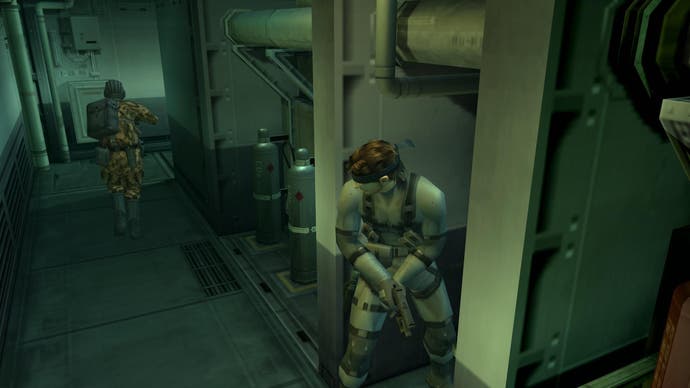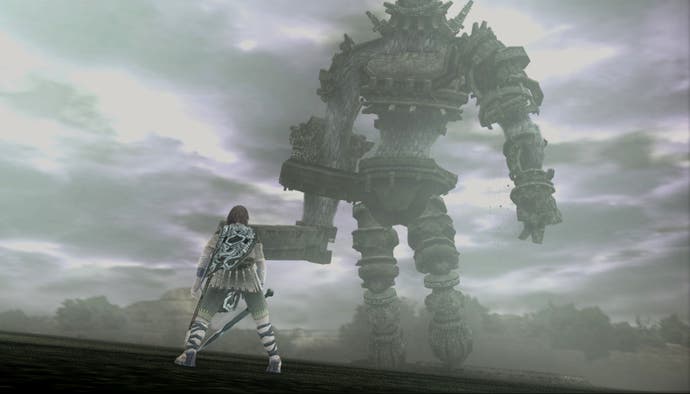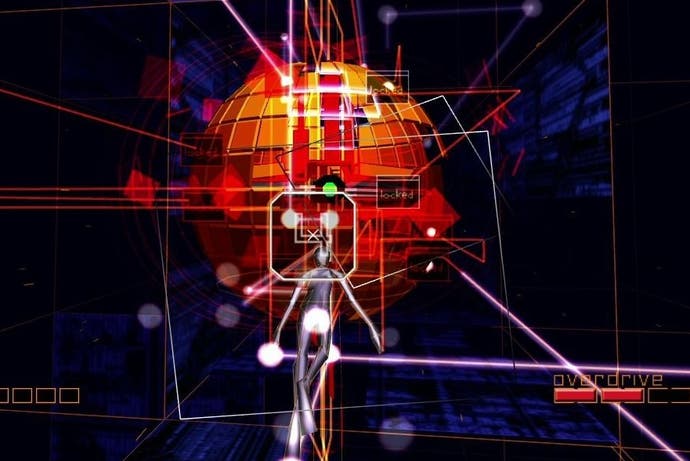Exploring the peculiar magic of screenshots
In praise of gaming's other kind of DPS.
Sure, they may be called video games, but I was brought up on the pictures. The screenshots. Split-second snaps of moving, musical, playable things; peering into worlds somehow changed through being fixed to the page.
Yes, occasionally there'd be a VHS cassette bundled with my monthly video game magazine, which was impossibly exciting and - to greener gamers - probably sounds inconceivably outdated, like conveying E3 news by smoke signal. But on the whole, it was a different time. My visual map of gaming was less montage than collage, a network of screenshots scatttered across the printed constellations of magazine page layouts.
This was not some charmingly quaint video-lite, but something else altogether, and I reckon the first images I ever saw of Metal Gear Solid 2 were intimidating in a way a Let's Play video couldn't be. For a start, just looking at them made it clear that the visual shorthand of older consoles - the 32-bit era's unique impressionism of painted darkness and pixel edges - had been replaced by the shipping tanker's cold-steel realism; actual light, believable surfaces, not just textures. And of course Snake himself, fringed by a rain-drop halo and bearing an unbelievably face-y looking face.
Combined with the staged, cinematic angles of the publicity shots the game seemed mysteriously aloof and, frankly, unplayable. I had no idea how one interacted with something so moody, in screenshots shorn of HUD, playable angles or any apparent entry point. It was unknowable. But if I'd have seen that legendary E3 2000 reveal in motion, I reckon I'd have understood. I'd have got it. But I'd have lost that initial awe.
Like, so what grandad? That was then, a time of innocence. And in general we are savvier fans now, cynical and hardened to hype, able to see past the preening, the digital contour cheek-sucking of bullshots and PR-curation. But sometimes, freed from the - you'd think pretty crucial - ingredients of player immersion and focus, images could capture the tone of a game, not just the graphics.

Hell, if I was feeling contrarian, I'd go as far as saying that games like Shadow of the Colossus can be better in screenshots, or at least hit notes too hard to hear above the noise of the game proper. Don't get me wrong, I enjoyed the tense climbs across those gigantic, stone-hewn hulks (I certainly seem to shoehorn a reference to them in all my writing). But I also remember the Edge Magazine preview, its silent images evoking something mythical, above the immediacy of sound and motion. Grand collisions of will made epic, like a renaissance painting dense with the drama of stilled time. Those pictures were full of the promise of unknown spaces and unknowable conflicts too great to actually be played out, in 30 frames-per-second, camera-wrestling, surface-glitching banality. It was still a AAA game, mind, made a little less mysterious in being paparazzi-snapped from all angles and in every level anyway, splashed across 10-page magazine 'exclusives' like a Hello! wedding.
But there were lots of games that I knew only as a screenshot or two, ones I never did play and had no real reference point for. Pictures from small, stubby magazine entries about a niche Japanese shooter tucked away at a trade show, or an enthusiastic footnote about an indie studio whose labour of love never did see the light of day.
Unassuming screenshots that could still snag, catching your eye and your interest - suddenly gaining an unexpected burden of representation, like the only photo you've ever seen of Uzbekistan, or a single Tinder profile picture. And - like a Tinder selfie - they'd spark wholly incorrect tangents of imagination and assumption (and mild arousal), best-guesses never corrected by actually playing the thing, or seeing it in motion. The streetlamp-calm of that Earthbound screenshot, a frozen burst of neon in Tempest 3000, the shadow-cast tableaux of Killer7 or the too-good-to-be-true 3D jungle of Seal Team's CD jewel case (which turned out mainly to be too-good-to-run-on-my-computer). They all stay with me as much as the games I have played, but with the unique mental meanders of guessing them wrong.
I suppose they're the anti-matter, the unplayed 'what-ifs' that help define the stuff I do play: a negative space of possibility, cultivated by daily Eurogamer osmosis and having old issues of N64 magazine still piled up on the toilet cistern as comfort reading. What I normally refer to - by myself, in my head, alone - as awareness intelligence, a multimedia miseducation built bric-a-brac from HMV-shelf-browsing sessions and endlessly re-reading reviews as companion pieces to new games, belatedly getting the references like delayed punchlines. But now there are early impression videos, public-betas and rolling newsfeeds. Though video games have changed a lot, I think the separate pleasures of reading, watching and waiting for games - the matters of anti-matter, of being a fan - have changed even more. In particular, I think the effect of screenshots has changed.

Of course, much of the difference is down to technology. Print media was physical in hand and finite in content, its pictures and prose weren't just drops in an infinite, surfable sprawl of hyperlinks and serendipity - the internet's sea of plenty. Instead the imagery was made tangible and thumb-able; visible in magazines laid open on messy study-desks or sun-bleached Sunday morning pillows. They were part of the clutter of the everyday and because of it, quickly part of the mental furniture too, gaining a familiarity far beyond the intentions of a deadline-fearing editor - I can still read the titles on the spines of my towering magazine pile and roughly describe most of the cover-art from memory. It's a crap party trick, trust me, but doing it (by myself, away from parties) made me realise just how personally iconic these images had become.
I realise screenshots still exist, and websites like Dead End Thrills prove they can still captivate. But the overall context has changed, and more often you'll see them buffeted in endless online galleries or framed by links to find out Which Celebrities I Won't Believe Have Ugly Partners; or just generally linking to something else a bit moving-er or a bit music-ier, which changes the picture itself, I think. Just as the feel of an album song is subtly skewed by the songs before and after it. It would be rich of me to suggest that images have been weakened in the internet age, mainly because I'm too scared Instagram will send Zoella to stab my eye with a sponsored mascara stick (#blacktears). But the whole cultural gallery has been renovated, warping our mental scaffolding a little, changing the way we hang our thoughts. Our thoughts, and some of our hang-ups too.
Because I do wonder sometimes - by myself, in my head, alone - if I just found it legitimising to have my pastime 'ennobled' in print, made independent of any electric screen ephemerality and thus somehow more worthy. As if in translation to page it gained value in whatever old-school cultural currency I was used to from World Book Day vouchers and GCSE English classes - that personal, bookish enclave of appreciation that isn't part of an online 'conversation'.
But that's the Werther's Originals talking because really, it's just a different flavour of fandom these days, and I enjoy dissecting Zelda trailers as much as the next man. I'm certainly not suggesting my old, analogue days were better than now. I'm not harking back to some golden age, where we shared incredible tales of the Sonic & Knuckles cartridge whilst huddled around the village fire at night (drawing screenshots in the sand with gnarled, wholesome fingers worn down by analogue sticks and not softened by swiping etc.). Gaming is altogether a more varied, interesting place, and I've no doubt that kids nowadays will soon write (or telepathically communicate) nostalgic pieces about Stampy Longhead's comforting cadences, or the benefits of holograms over eyeball augmentations or whatever.
We've moved on now, closer to the industry and more connected to its happenings. That distant, detached vantage point from which I used to look out onto the gaming landscape has been moved and with it, the view has changed too. But you know, I quite liked that tension between still images and the playable games they represented. The strange separation that occurs when you pass a game through a prism of print, splitting it into screenshots and captions and writing and the rest. Stuff got lost in translation sure, but with that mismatch could also come a few new pockets of mental breathing room, a few bits of gold between the gaps.









